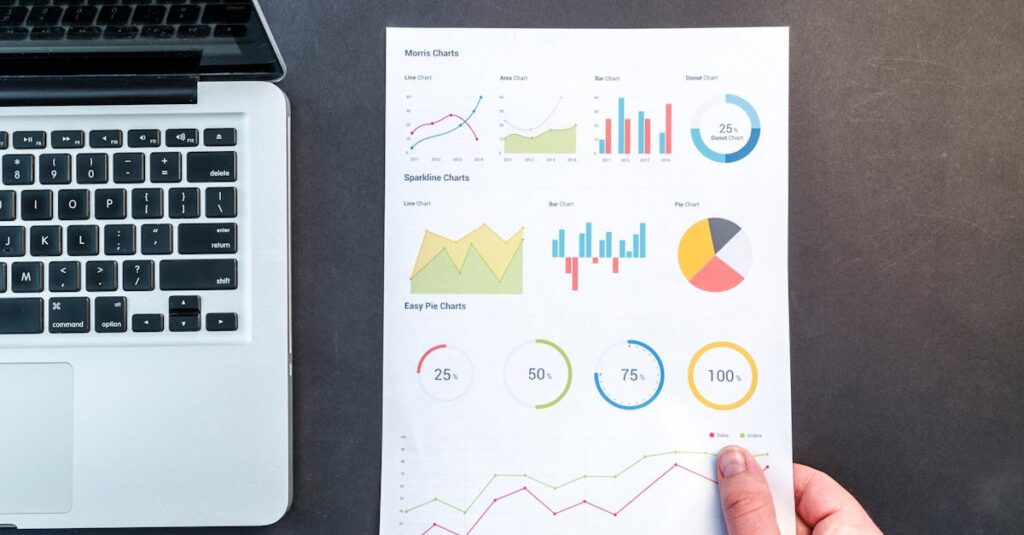Introduction: The Power of Data-Driven Decisions
In today’s fast-paced business world, it’s no longer enough to make decisions based on gut feeling or past experience. Companies, whether large or small, are turning to analytics to guide their choices, optimize performance, and stay ahead of the competition. But how exactly can you leverage analytics to drive better business decisions?
Analytics aren’t just for tech giants like Google or Amazon. Any business, whether you’re a local coffee shop or a growing e-commerce platform, can benefit from using data to make smarter choices. In fact, in a recent study, companies that use data-driven decision-making have shown a 5-6% increase in productivity and profitability. So, let’s explore how you can turn your data into action.
Understanding the Basics of Analytics
Before jumping into how you can use analytics, let’s break down what we mean by “analytics.” Simply put, analytics is the process of collecting, organizing, and analyzing data to uncover insights that inform decisions.
But analytics isn’t just about looking at numbers. It’s about asking the right questions: What is working? What isn’t? Where can we improve? And how do we get there? The answers to these questions help businesses make more informed decisions that aren’t just based on assumptions, but on hard facts.
Analytics in Action: Real-World Examples
Let’s start with a simple example. Imagine you own a small clothing store. You’ve noticed a dip in sales, but you’re not sure why. Your first instinct might be to blame the economy, or maybe even assume people just don’t like your designs anymore. But what if you could see data about your sales trends, customer preferences, and even the weather patterns that affect shopping behavior?
By looking at analytics, you might uncover that sales drop during certain weather conditions, say, on rainy days. Maybe your promotions aren’t reaching the right customers, or perhaps your online ads need a refresh. With data, you’re not just guessing, you’re making decisions based on clear insights.
Types of Analytics to Guide Your Decisions
1. Descriptive Analytics
Descriptive analytics is all about understanding what has happened in the past. Think of it as a report card for your business. It gives you a snapshot of your performance, what products sold well, when your website saw the most traffic, or how your marketing campaigns performed. The goal here is to understand trends over time.
For example, you could use descriptive analytics to track how your customer base has changed over the last year. Maybe you notice that a new demographic, let’s say younger consumers, have started making up a larger portion of your audience. That’s valuable information for your next marketing campaign.
2. Predictive Analytics
Now, imagine you could predict what will happen in the future. That’s where predictive analytics comes in. By analyzing patterns in historical data, predictive analytics uses statistical models and machine learning to forecast what might happen next.
For instance, an online retailer might use predictive analytics to forecast demand for certain products during the upcoming holiday season. With this data, they can stock up on popular items and avoid understocking or overstocking, which could cost them big time.
3. Prescriptive Analytics
Once you know what’s happening and what might happen, prescriptive analytics tells you what you should do about it. This type of analytics gives recommendations for actions based on data insights. It’s like having a consultant who always has your back, suggesting the best course of action to maximize results.
If a marketing campaign is underperforming, prescriptive analytics might suggest adjusting the target audience or changing the ad copy. If a product is getting lots of interest but poor reviews, you could be advised to tweak the product or improve customer support to resolve the issue.
Turning Analytics into Actionable Business Decisions
Knowing which type of analytics to use is only the first step. The real challenge comes in turning insights into meaningful actions that improve your bottom line. Here are a few ways to do that:
1. Measure What Matters
Before diving into analytics, you need to identify what actually matters for your business. What are your key performance indicators (KPIs)? Whether it’s customer satisfaction, revenue growth, or website conversions, focusing on the right metrics helps you avoid getting lost in the data.
For instance, if your goal is to improve customer retention, then tracking the number of repeat purchases or average customer lifetime value might be more important than tracking how many new customers you’re acquiring. By measuring what truly impacts your business, you can make decisions that move the needle in the right direction.
2. Test and Optimize
Analytics can point you in the right direction, but experimentation is the key to refining your approach. Running A/B tests, for example, can help you understand which strategies work best. Maybe you’re unsure whether a discount or free shipping will lead to more conversions, an A/B test gives you clear data to answer that question.
Consider a case where a software company was unsure whether to offer a free trial or a money-back guarantee. By using A/B testing to see which offer drove higher sign-ups, they were able to optimize their offer and increase conversions by 25%, all thanks to analytics and testing.
3. Communicate Insights Across Teams
Data might be the lifeblood of decision-making, but if your team isn’t using that data effectively, it won’t get you very far. Sharing insights across departments ensures that everyone is aligned and working toward the same goals. For example, marketing might use customer data to improve targeting, while sales teams could adjust their pitch based on buyer preferences.
In one example, a retail chain used analytics to discover that certain products were more popular among women over 50. By sharing these insights with the store layout team, they were able to redesign their stores to showcase these products more prominently, leading to an increase in sales.
Conclusion: Analytics, A Continuous Journey
Analytics isn’t a one-time fix; it’s an ongoing process of learning and adapting. The data you collect today may help inform decisions now, but tomorrow’s data might reveal new insights that can lead to even better results.
By embracing analytics, you unlock a new way of approaching business decisions, one that’s backed by data, not just intuition. Whether you’re looking to improve customer satisfaction, increase sales, or optimize your marketing efforts, analytics can help you get there. But remember: the true power of analytics comes when you combine insights with action. It’s not just about looking at the numbers; it’s about making those numbers work for you.
So, are you ready to make your next business decision based on the data you already have? The numbers won’t steer you wrong!

